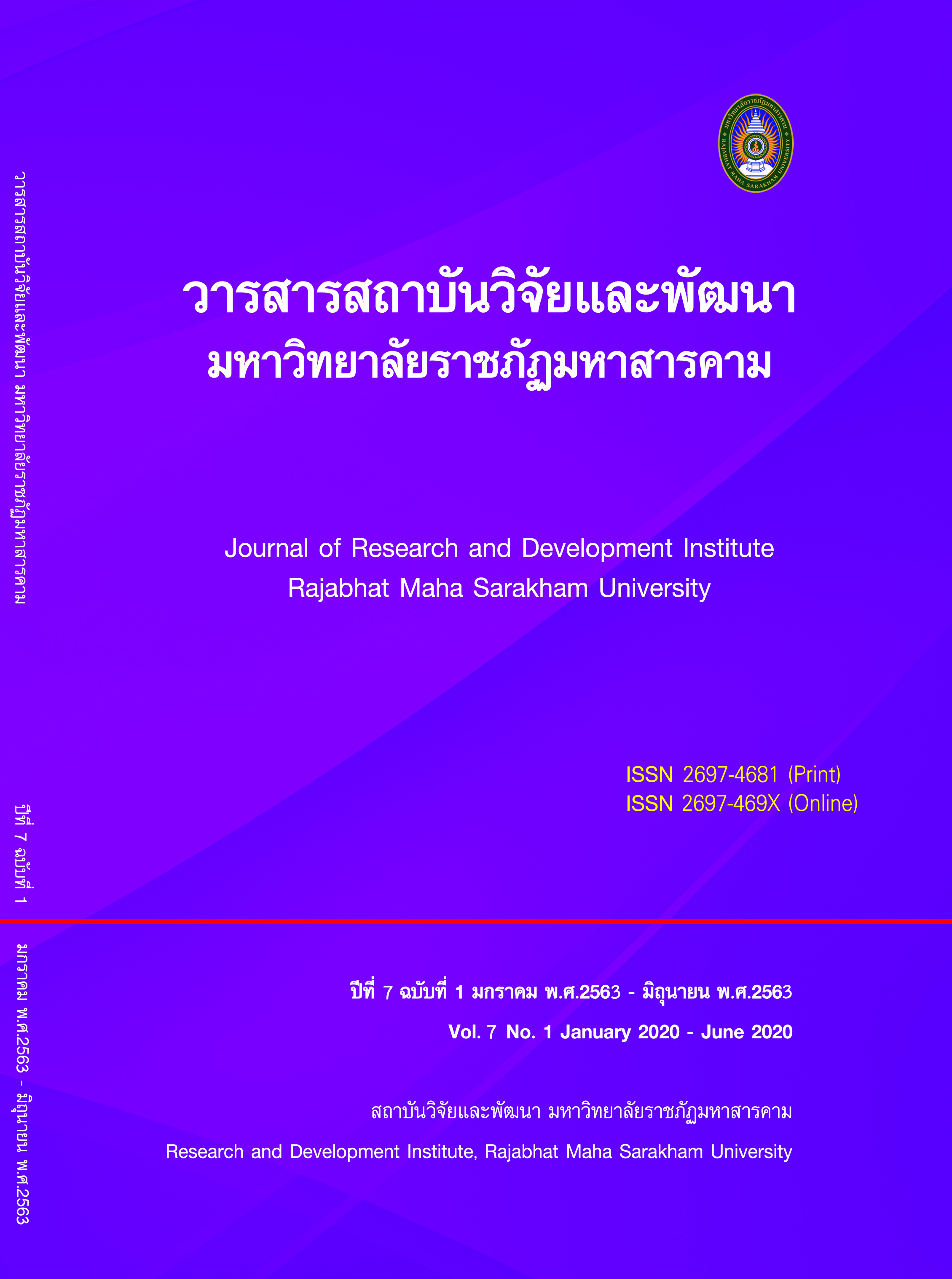Geo Informatics Technology to Study the Changes in Land Use for the Cooperative Management of Phukatae Community Forests, Kasetsomboon District, Chaiyaphum Province
Keywords:
Geo Informatics Technology, Forest area change, Land Use, Cooperative Management of Community ForestsAbstract
This research aimed to study 1) the study changing characteristics in the areas of Phukatae community forests from the satellite data within 2 durations, during the years of 2544 B.E. and 2561 B.E; 2) the developmental study for the management model of the community forest. The research resource were Purposive sampling 12 Stakeholders. The instruments were 1) Close – end questions 2) Record and 3) Notebook and to analyzed data by Thematic Analysis the research results found that ;
- 1. The comparative results of the changes in the community forest areas in the years of 2544 B.E. and 2561 B.E. pointed out that there were: the decreasing rice farm land in 86,400 square meters (0.56%) ; the increasing agricultural areas in 658,800 square meters (4.29%) ; the increasing buildings constructed in 450 square meters, equaled 100%, the increasing of completely deciduous forests in 10,486,888 square meters (68.35%) ; the decreasing decadently deciduous forests in 10,781,550 square meters (69.97%) ; the increasingly complete forest gardens in 45,000 square meters (100%) ; the increased deciduous forests for further restoring in 2,861,325 square meters (18.65%) ; the decreasing wane landing in 263,475 square meters (1.72%) ; the wane land switched with the agriculture increased in 2,842,425 square meters (18.53%) ; and the water resources increased in 78,613 square meters (0.51%).
2. The guidelines in the development model of the sustainable community forest management include 7 items as follows: (1) Organizing the villager meeting living around the community forests for comprehending. (2) Having the training activities to educate the people and youths. (3) Having the activities to establish the awareness and discipline in the management of the sustainable community forests for the youths regularly and continually. (4) Having the field study for the community forest management in the prototype areas. (5) Establishing the community rules with the community forest measures. (6) Setting the group of the community forest return. And (7) For the performance in the sustainable community forest management, it must have the cooperation from someone involved covering the officers from the local government organization and stakeholders containing the offices from sub-district administrative organization, scholars, private sector officers, associated government agencies, and local people.
References
References
Ampansirirat, Amavasee. (2014). “The Concepts of Qualitative Research”. The Southern College Network Journal of Nursing and Public Health, 1 (2): 68-74. [In Thai].
Bunsongsrikul, Lakkhana. (2011). Community Forest Network Nong Rong Subdistrict, Phanom Thuan District, Kanchanaburi Province. Research Report of a Training project for Researchers to Build Seedlings (Seedlings), class 9. Bangkok: National Research Council of Thailand. [In Thai].
Chaiyaphum Forestry Office. (2016). Community / Village Forest Project According to the Department of Forestry's approval (Phu Kratong Forest). Chaiyaphum: Chaiyaphum Forestry Office. [In Thai].
Chamram, Pornpimol. (2013). Community forest management as a cultural resource case study: Ban Sam Ka Moo 6, Hua Sua district, Mae Tha, Lampang province. Master of Arts Thesis (Cultural Resource Management) : Silpakorn University. [In Thai].
Department of Forestry. (2016). Community Forest Database. [Online] : http://www.forest.go.th/community_extension/index.php [20 September 2016]. [In Thai].
Department of Forestry. (2018). Forest statistics year 2552 B.E. [Online] : http://www.forest.go.th/stat/stat52/ตาราง1.htm [20 June 2018]. [In Thai].
Geo-Informatics and Space Technology Development Agency. (2018). Satellite Image Data. Chaiyaphum: Geo-Informatics and Space Technology Development Agency. [In Thai].
Sokoakha, Noopai et al. (2012). Appropriate System to support the development of the quality of life of people in the community of Network of Phu Krathum Forest: A case study of 4 sub-districts in Kaset Sombun District, Chaiyaphum Province. Bangkok: The Thailand Research Fund. [In Thai].
Soontornwong, Somying. (2014). Community forest and Thai society. RECOFTC - Thailand. 23 September 2014. [Online] https://archive.recoftc.org/sites/default/files/uploaded_files/2%20 [20 June 2019]
Sudnongbua, Supaporn. (2012). "Issue Analysis" ", The Teaching Materials on the Topic of "Issue Analysis Techniques. Phitsanulok: Naresuan University.
Downloads
Published
How to Cite
Issue
Section
License
Articles that are published are copyrighted by the authors of the articles







